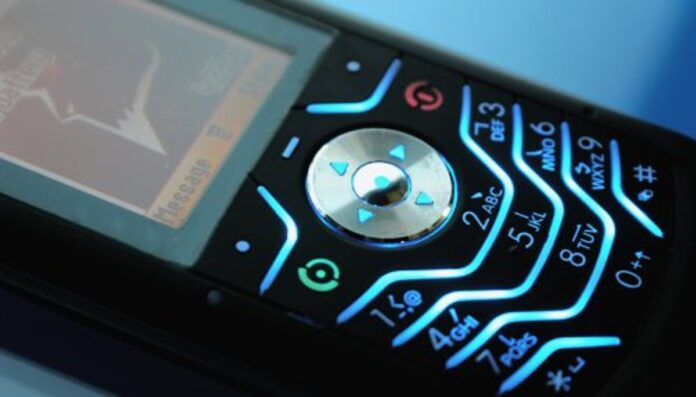NB: This is guest post by Daniele Beccari, vice president at Isango and a technology consultant.
There is consensus across all travel industry sectors that mobile transactions cannot take off until a simple payment method becomes mainstream.
And everyone agrees that direct billing (ie. letting users pay for services on their mobile phone bill) would be an ideal solution.
There are obvious advantages:
- fool-proof usability: no data to enter, process completed in 1 or 2 clicks. Not only error-free, but also great for impulse purchasing.
- billing infrastructure already in place: billions of consumers bank accounts are already connected and technically “ready” – globally. This could be totally widespread from inception.
- no need for any additional hardware or software deployment.
- device independent: with some variants, it can be used on smartphones and feature phones of any maker and operating system. No need to develop for multiple platforms or wait for new OS versions to be released.
- secure: the carrier can perfectly identify the device, and possibly the user, through the network.
If this all sounds too good to be true, several major obstacles currently don’t allow it to happen:
- Astronomical fees: as most current schemes have been designed for micro-payments of ring tones and wallpapers, operators keep a cut between 15 and 50%, which makes it impossible to use these services for anything else than virtual goods like music, apps, e-books or other soft content.
- Fragmented technical solutions across markets and operators: travel merchants can’t afford filing individual applications and implement different solutions with all carriers around the world. In 2005, the Simpay attempt to create a single carrier billing infrastructure in Europe with Vodafone, Orange, T-Mobile and Telefonica did not succeed, apparently due to lack of agreement on the platform goals and to lack of market traction.
- Carriers hesitance to embark in a new role as payment service providers: national regulations or even just plain risk assessment may seem like further burden on already strictly regulated carriers. Carriers don’t like the idea of becoming the culprit for all payment issues, and having their call centers flooded with requests for clarifications or complaints from users. Currently, they only take risk for small amounts, up to $10-$20.
People within the industry that I have spoken to explain: Carriers have the classic “incumbents dilemma”. They agree many elements are perfectly positioned but they have a lot of concerns.
- sticker shock on the bill which could lead to account cancellations
- risk of financial loss for a non core service
- customer service costs
- additional regulatory burden.
But with the appearance of a whole new ecosystem of mobile apps and services, some are indeed starting to see a humongous opportunity for carriers to substitute to credit card companies (and a major threat for the latter).
Annual credit card fees in the US alone, for example, amount to more than $40 billion, and there is little competition among the three dominant players.
Which means that some things are moving.
As an industry, we should keep an eye on initiatives coming from these four areas, as one of them might prove successful enough to open all doors:
1. Mobile carrier global workgroups:
- The GSMA OneAPI initiative: this is aimed at providing developers with a single access to cross-operator services, including direct payment. The first pilot has just launched in Canada with the 3 operators (Bell, Rogers and Telus). UK might be next. Although this initiative could solve the technology issue, the business terms are still prohibitive as the retained fees are of 30%.
- The WAC (Wholesale Application Community): the WAC is a platform initiative from 24 mobile operators to define common standards for mobile app development and management. Nothing specific has been announced to date, but this will have to include a direct billing solution – at least a technical harmonisation.
2. National initiatives:
- The UK has perhaps the most advanced national ecosystem to date. All five UK carriers launched the Payforit scheme in 2007, from the ashes of Simpay. Fees are of 13-27%, it remains however limited to £10 and the payment process is relatively complex.
- France has launched the MPME scheme. With about 42% in fees, and purchases limited to 8 Euros, we are not there yet. But again, it shows operators are collaborating.
- In Japan, mobile payments through e-wallets are widespread, but not direct billing for mobile purchases. Following the Apple AppStore craze, DoCoMo is now revamping the I-Mode app store and has announced direct billing fees of only 9% to attract developers.
- In the US, AT&T, Verizon and T-Mobile are testing a carrier billing solution for in-shop payment together with Discovery (US’s 4th card company) and Barclays. Although in-shop mobile payments are a different thing than remote mobile payments, this initiative at least proves that US carriers are smelling blood and getting ready to work together.
- In Korea, direct billing is well established and operators have already processed billions of $ in transactions. The fees are around 8% (5% for the carrier and 3% for intermediaries like Danal), with transaction amounts limited to $120. This starts making sense for some goods and services categories…
3. Independent providers (we’ll call them the “metas” of direct billing) offer aggregation services to use direct billing from multiple carriers in multiple countries at once, but of course retain an additional fee.
A few names to watch are:
- Boku (US) – wide coverage (60 countries, 200+operators). Used by leading social gaming networks like the giant Zynga.
- Zong (Switzerland) – also wide coverage (30 countries, 170 operators). Charges 5-10% on top of carrier fees. Recently also extended the service to cloud based e-wallet backed by credit cards (a-la Paypal). Chosen by facebook to operate the facebook Credits virtual currency.
- Bango (US) – retains 2-5% additional fees on top of the carrier fees, also allows to use credit card and Paypal. See their nice and clean table of payouts for several countries and carriers.
- Danal (Korea) and Billtomobile (US), one of the earliest players in this space, is now extending its operations globally – with China and US first. Over time Billtomobile claim they can achieve “mid-teens” fees in the US.
- …for the sake of space we’ll just name a few others like Netsize, 2ergo, mBlox, 24gmedia, …
4. Mobile application stores.
Considering app stores are currently the de facto transactional marketplaces on mobile platforms, they are likely to influence and possibly drive payment methods acceptance.
Google recently announced support for carrier billing in the Android Store terms and conditions. Considering Google’s global relationships already built with virtually all carriers for Android distribution (if not for other services like buying bandwidth…), carrier billing on the Android Store is likely to become widespread.
The commercials are not known, but if Google shares the 30% market fees with the carrier, it shows the model can operate with mid-teens fees for the carriers. More specifically:
- T-Mobile, AT&T, South Korean carrier SKT have already announced support for Android Store carrier billing.
- Nokia is also negotiating to offer carrier billing on Ovi’s store, with support for AT&T carrier billing launched in Jan 2010.
- RIM BlackBerry’s AppWorld has announced carrier billing support in 2010, starting with AT&T support on the new Torch.
- Windows Marketplace also lists AT&T carrier billing as a payment option.
All in all, direct carrier billing is a promising solution but it’s still too far from becoming the simple and widespread mobile payment method we’re all waiting for.
Maybe we should let the carriers know that the trillion-dollar travel industry is interested?
NB: This is guest post by Daniele Beccari, vice president at Isango and a technology consultant.



